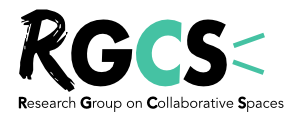by Blandine Bréchignac
Beyond the quick and massive development of the coworking movement, a recent phenomenon raises attention: corporate coworking (sometimes called “corpoworking”). Is that a new corporate fashion trend? A new idea to strenghten employees motivation? A new lever for real estate optimisation? An incentive to innovate again and again (or more and better)? And what really happens in corporate coworking spaces?
All these questions made it necessary to conduct an in-depth study about corpoworking, what we did from July 2014 to October 2015, in three European countries, France, Germany and Switzerland, comparing the cases of six companies, of different sizes and diverse industries.
For greater precision, the study was based on a deliberately restrictive meaning of “corporate coworking”: the analysis bears solely on coworking spaces created by companies for their employees, and in some cases for outside users as well. The study does not focus on practices, which consist of giving the employees an opportunity to go to work in off-site coworking spaces. It is likewise uninterested in projects aimed at setting up offices “in the coworking style” or in coworking spaces created by companies without being intended for their employees.

Photos: Blandine Bréchignac
Through the study, it appears that corpoworking has many similarities with “classic” coworking (ie outside the company):
- corpoworking spaces are actually third places for work;
- they have the same “basic” components as coworking spaces: diversity of spaces, adapted IT infrastructure, community of users, community management;
- they are more or less open, depending on the individual case, sometimes closely targeting users;
- freedom is an important principle (freedom to attend or not, freedom to think and act other than according to traditional corporate standards);
- focus is on interaction, and collaborative efforts are encouraged;
- available resources, both tangible and intangible, are shared as much as possible;
- the community is often involved in the project, in setting up the place, resulting in a specific attachment to the project/place;
- day-to-day interactions are regulated fairly spontaneously by the collective; trust and common sense prevail;
- each person is expected to participate in the life to the place concomitant with what he/she receives there (gift/counter-gift), a predisposition for exchange and sharing;
- the economic model of the projects is atypical and/or shaky; the “D system” is part of their standard mode of operation;
- the project reflects values; it responds to a “higher ambition” of transformation and is part of “doing”(it sometimes explicitly refers to the makers movement).
In contrast, corpoworking spaces have some unique features; here are some examples of these:
- their creation is an experiment; not all arrangements are permanent;
- their layout and mode of operation are characterised by more lavish facilities than in coworking spaces;
- whether they want to or not, corpoworking spaces remain subject to the company’s pre-existing work norms;
- for those spaces open to outsiders, specific questions are raised, particularly relating to protecting information, regarding which employees have not always been made aware;
- in their day-to-day operation, corpoworking spaces must compromise with the company’s regular processes (procurement, accounting, reporting, etc.), which may represent handicaps for carrying out their specific mission.
Indeed, the study’s findings show that the creation of a corpoworking space is not an end in and of itself; in the projects examined, the space offers an experimental setting: it is a resource that serves an ambition of innovation and transformation for the company to cope with the impacts of the digital revolution on both its business and work. As a matter of fact, the projects always have a sponsorship at the highest level of the organization (executive board or equivalent).
What is also striking is the ability of these companies through these experiments to create a space suitable for experimentation, with no requirement of short-term profitability, implementation of a light project structure, prototyping approach, and getting users involved in developing the project. These characteristics all sound very uncommon in the “classical” companies we know…
All of the findings reveal that corpoworking spaces can serve different functions in an organisation: meeting places, living labs, affirmation places, neutral territories, etc. They also reveal interesting impacts of corporate coworking on work and management practices, on performance, image, etc.
The summary of the study report will provide more information about these topics. It’s available here: http://tiny.cc/sll85x
Can the experiments analyzed be reproduced? Are projects of this type feasible and sustainable today in a “classic” organizational context, especially with regard to the profitability imperative? What are their real medium-long-term impacts on people, organisations, work modes and management styles? How can the innovations produced by corpoworking be capitalized and disseminated widely? How can we keep these initiatives, because they exclude some employees, from contributing to the establishment of multiple-gear work systems and from creating inequalities likely to damage social cohesion? How can we avoid distorting the desire for and energy of transformation that today underlie corpoworking through excessive instrumentalisation and institutionalization?
Beyond all these still-unanswered questions, corporate coworking remains full of promise in terms of innovation, corporate transformation, efficiency and the quality of people’s life at work. On their own, this promise justifies an interest in “corpoworking” and its continued exploration.
And to start with, your comments on this post will be warmly welcomed!
